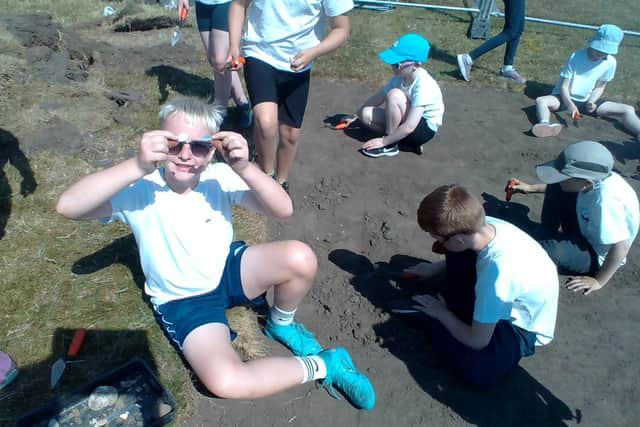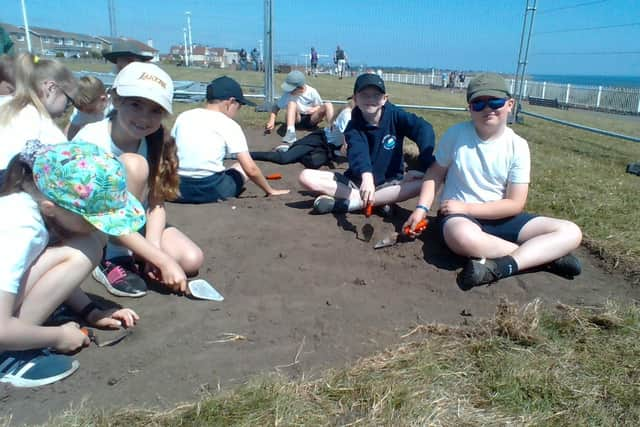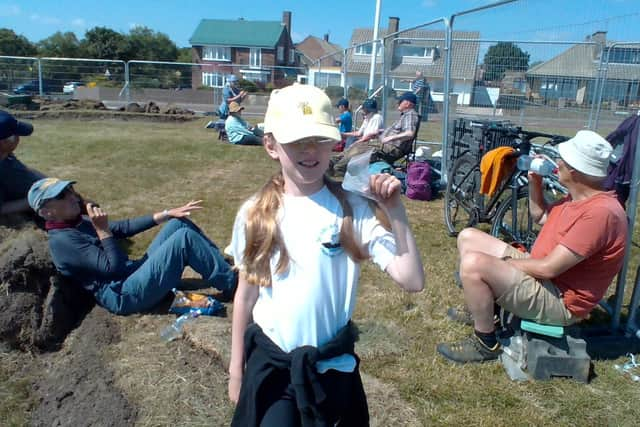Sunderland children make exciting discoveries as archaeological dig reveals fascinating insight into Victorian life at Roker Gun Battery
and live on Freeview channel 276
Year 4 pupils from Seaburn Dene Primary School were invited to the dig at the clifftop site of the Roker Gun Battery which was established in Victorian times and went on to be used as a site of coastal defence during both world wars.
In addition to the housing of two heavy artillery guns, the site, which is now a grassed recreational area, was once home to four trenches with barracks for soldiers.
Advertisement
Hide AdAdvertisement
Hide AdAfter arriving onsite and being given a crash course in how to dig for artefacts, the children were given their own dedicated trench to excavate and the finds came rolling in.
In addition to brickwork which formed the barrack buildings and coal for keeping warm, many of the children’s discoveries were of a more personal nature.
Luke Cutbertson, nine, said: “I found a clay pipe which one of the soldiers used to smoke. I was really excited when I made the find.”
Classmate Josh Trout, nine, added: “I found pieces of pottery from a dinner plate and bowl which would have been used by soldiers in the barracks when eating their dinner.
Advertisement
Hide AdAdvertisement
Hide Ad

"It’s marvellous to think that over 100 years ago this could have been the site of an old kitchen in the barracks. I had loads of fun and learnt lots on the day.”
Any items of particular interest or possible value were “bagged up” for further analysis, including a piece of jewellery found by Isabelle Clish.
The nine-year-old said: “I found a black bead which is believed to be part of a necklace. I also found lots of pottery. I was surprised by just how many items we found.”
The dig, which is taking place between June 20 and July 1, is being run in partnership between Tees Archaeology, Sunderland City Council and SeaScapes, a Durham County Council collaborative organisation utilising National Lottery Heritage funding to engage communities in learning about both their natural and cultural heritage.
Advertisement
Hide AdAdvertisement
Hide Ad

SeaScapes manager Karen Daglish said: “We are digging deeper into the significant role that the North-East coast played in strategic UK sea defences during war time.
"The story of the gun batteries at Roker is an important part of this and deserves to be told.”
Getting involved in the project is all part of the school’s ethos to promote practical learning, with the pupils also recently involved in the Wild Oyster initiative at Sunderland Marina to create new oyster habitats and a self sustaining population.


Year 4 teacher Richard Good said: “As a school we put so much emphasis on hands-on-learning as the children remember so much more. The children were massively enthusiastic and had so much fun.
Advertisement
Hide AdAdvertisement
Hide Ad"The chance to take part in a live archaeological dig is an opportunity they may never get again.”
The SeaScapes project focuses on the England Coastal Path running along the Tyne to Tees shore, covering an area up to six nautical miles out to sea.
Comment Guidelines
National World encourages reader discussion on our stories. User feedback, insights and back-and-forth exchanges add a rich layer of context to reporting. Please review our Community Guidelines before commenting.
